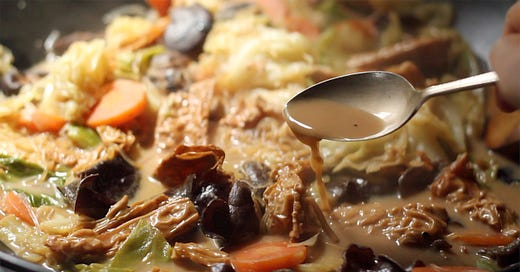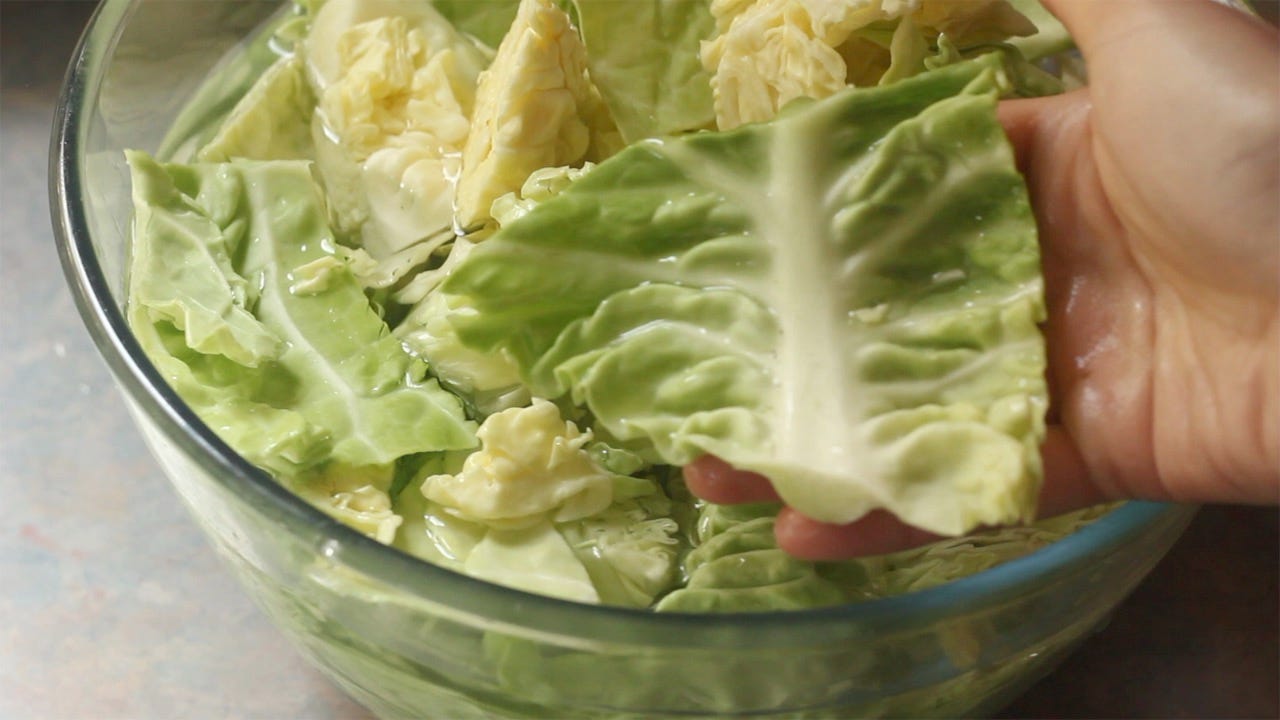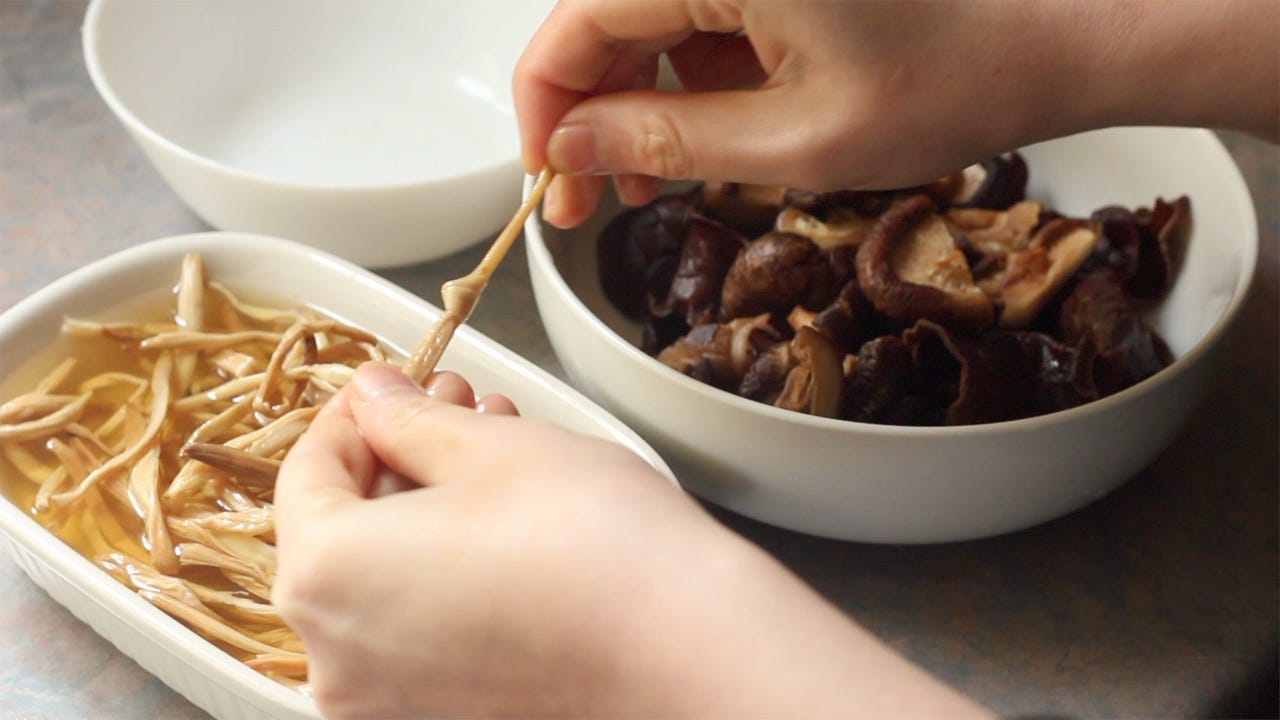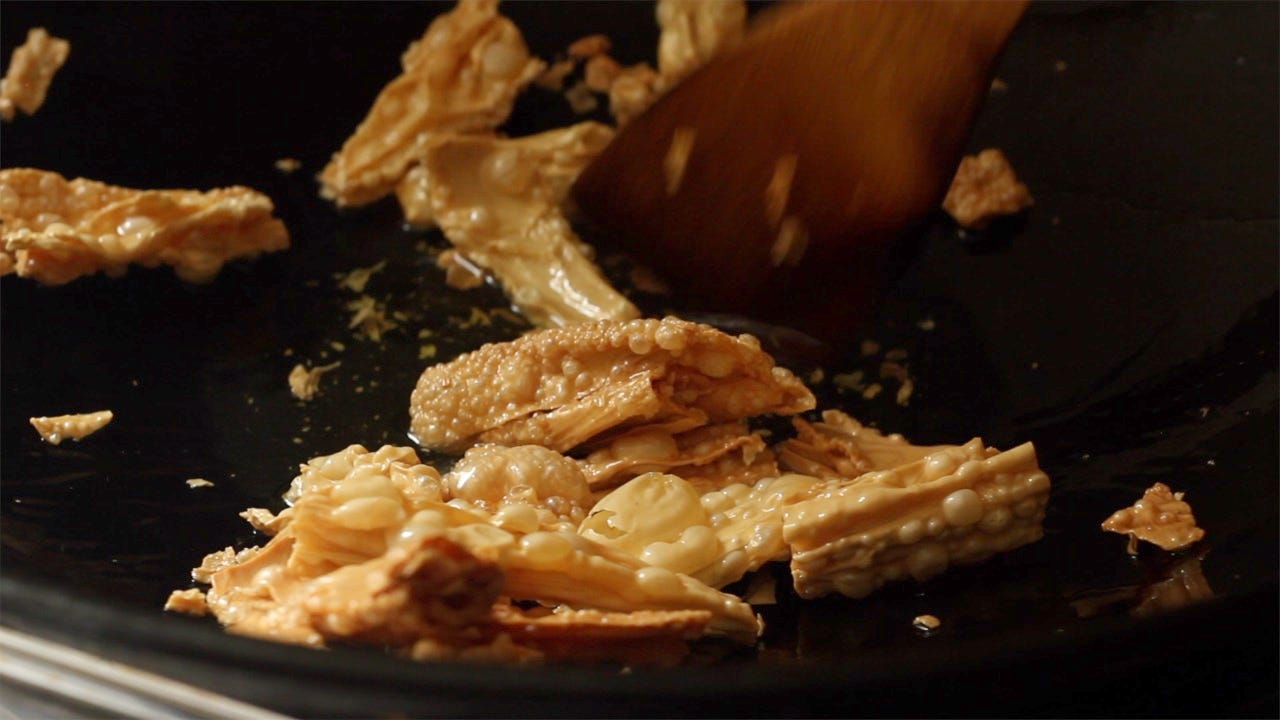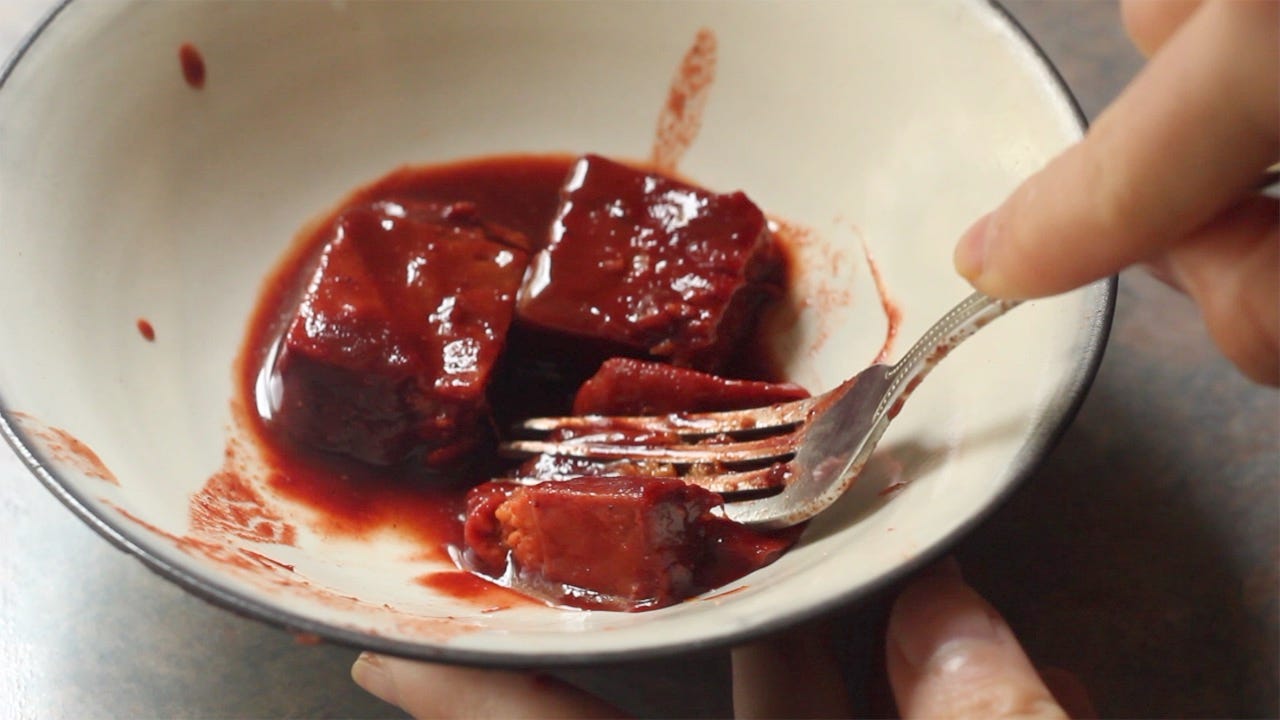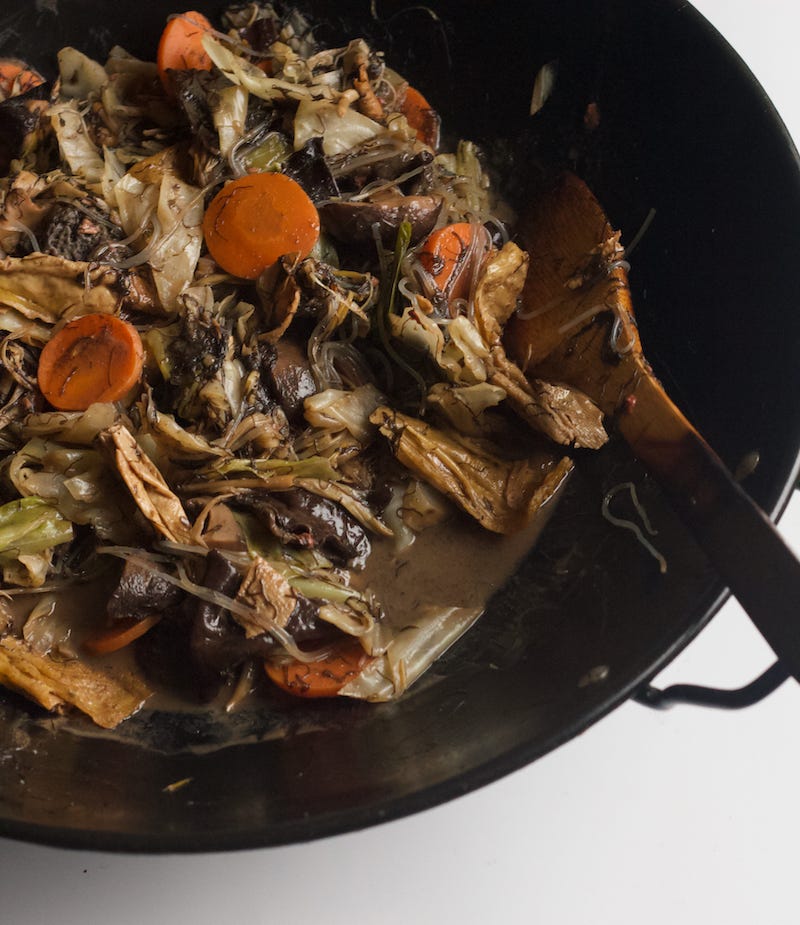In Singapore, the term ‘chap chye’ can mean so many things. It can be a combination of cabbage and one or two other vegetables (commonly carrot and mushrooms), hastily fried with oyster sauce and served at the economic rice stall, or an elaborate stew comprising of a whole array of ingredients reserved for Chinese New Year.
In English, it is known as ‘Buddha’s Delight’, though its Mandarin name luohan jai really implies that it is Buddha’s prominent disciples, the arhats or luohan who are really delighted. While our modern notion of vegetarianism is closely associated with ethics and health, the Buddhists see the abstaining from meat as a spiritual process of purification. Connecting the consumption of meat to man’s animal nature, the Chinese believe that in order to receive celestial blessings, one has to cleanse the body with vegetables.
Traditionally, 18 ingredients would comprise this dish to symbolize an ingredient thrown in by each of Buddha’s 18 arhats. These days, however, the dish has been simplified, but still prepared with at least ten ingredients - some say this could have given rise to the name of the dish (chap chye) as ‘chap’, while meaning 'mixed’, also sounds like ‘ten’ in Hokkien. To a people especially fond of wordplay and homophonic puns, each ingredient that goes into the dish has meaning and symbolism. Cabbage - a must-have - is known to the Hokkiens as pau chye, ‘pau’ meaning to ‘encircle or to surround’, alluding to a close family unit.
This dish is important to the Peranakans, who prepare chap chye to enjoy on a regular basis and a unique version - chap chye chin - for ancestral worship. A few raw cabbage leaves would be placed in a serving dish, into which the cooked chap chye would be poured. The chap chye chin would be offered to the ancestors, before the raw cabbage is cut into pieces and reheated with the rest of the stew for the enjoyment of the entire family. The word chin here means ‘to be close’. In this context, cabbage’s ‘pau’ assumes its second meaning in Mandarin/ Hokkien - ‘to be guaranteed’ - and its use in the dish symbolically represents that the entire family unit, comprising of members both dead and alive, is guaranteed to be close. This is why chap chye chin is typically prepared for use in rituals involving the family’s ancestors.
For rituals, the Peranakans would also traditionally tie dried lily buds (sometimes known as golden needles) in pairs before cooking. While this serves a functional purpose of preventing the buds from fraying as they cook, the tying represents close ties and family unity. In Chinese families, it is more common to simply tie a knot in each lily bud.
For Chinese families, chap chye can have differing ingredients depending on your dialect group. My Cantonese grandmother always prepared hers with dried hair moss, which is fatt choy in Cantonese. Meaning ‘to strike it rich’, this is the same term used in the quintessential Chinese greeting, said in Cantonese - ‘gong hei fatt choy’. Glass noodles symbolize longevity, and my popo even throws in ho see (dried oysters). It might seem odd that dried oysters are used in this traditionally vegetarian dish, but to some Buddhists, while the eating of meat or fish is not considered vegetarian, shellfish are permissible, for they have no blood. Ho see to the Cantonese sounds like good things are going to happen, and are a must-have for the New Year. There are also ingredients to avoid. While dried tofu in the form of sweet beancurd strips (teem chok) and beancurd sticks (foo chok) are staple additions to chap chye, fresh beancurd is shunned as its pale whiteness is an inauspicious allusion to death.
Though a vegetarian version is traditional, some versions of chap chye embrace the use of seafood and meat. Hainanese chap chye, for example, uses dried shrimp and cuttlefish, probably due to the abundance of seafood on Hainan island. One version served by a Singaporean Hainanese restaurant even adds dried pig skin (similar to what you’d get at yong tau foo stalls), that sponges up the flavours of the braise. Peranakan chap chye uses a combination of pork belly and prawns, and cooks the cabbage in prawn stock - unsurprising when you consider how beloved the combination of fatty pork and prawn is, a recurring pairing in many Peranakan dishes such as popiah and kueh pie tee.
To flavour the chap chye, the Chinese use a combination of soy sauce, oyster sauce (vegetarian oyster sauce for some), and fermented tofu - either white or red. The Peranakans prefer using taucheo, a fermented soybean paste, sometimes used in combination with a rempah. This came as a surprise to me when I first read about it, and I find it an absolutely fascinating example of the way the Malay heritage of the Peranakans has once again found its way into their cooking. This style of chap chye is known as chap chye masak titek, where titek refers to a type of rempah (spice paste) comprising pounded shallots, candlenuts, chillies and belacan.
For me, chap chye was never a big love in my life. Sure, I’ve grown up with my popo’s chap chye but, as a huge meat-lover and vegetable-hater back then, it never really stuck with me as something to treasure. Working on the Hungry Ghost Festival issue of Seasonings, I knew that I want to develop a recipe for chap chye, but I was kind of dragging my feet because it never left much of an impression when I was living in Singapore. But I did and I couldn’t have been more glad, because it was so flipping good. Good enough for me to gift a friend some, who shared it with his extended family, and told me that it reminded his mother-in-law of the chap chye her auntie used to cook during Chinese New Year. Maybe it is being abroad, maybe it is age, maybe it is developing a newfound appreciation for vegetables and my own culture… maybe it is all of the above. But chap chye will definitely be in staple in my repertoire from now on, and I hope that this seemingly pedestrian everyday dish will be one in yours too. P.S. If you do make this recipe, please promise me you’d age it for a day or two. It really gets better with time.
Chap chye
Serves 6

